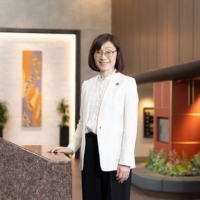Tango has been variously described as a duel, a surrender, a labyrinth -- and the truest manifestation of the Argentine soul. It is so uninhibited and passionate that it was considered corrupting and sinful, which of course is why it's so wonderful. The image of a couple in skin-tight clothes twirling together, stroking each other's curves and breathing heavily through flaring nostrils is about as close to the sexual act as any dance could get.
Now, of course, tango has become almost classical in its refinement, moving from the red-light districts of Buenos Aires to ballrooms and concert halls around the world. Still, a few tango artists continue to infuse the music with its original passion and daring. One of the most respected, Juan Jose Mosalini, comes to Tokyo this week with his Buenos Aires Tango Quintet.
Mosalini plays in the shadow of the late, great Astor Piazzolla, the tango master who broadened the scope of tango by changing the size and shape of groups and adding musical concepts from jazz and classical music. Piazzolla died 10 years ago, but the tango world is gradually catching up with his innovations.

















With your current subscription plan you can comment on stories. However, before writing your first comment, please create a display name in the Profile section of your subscriber account page.